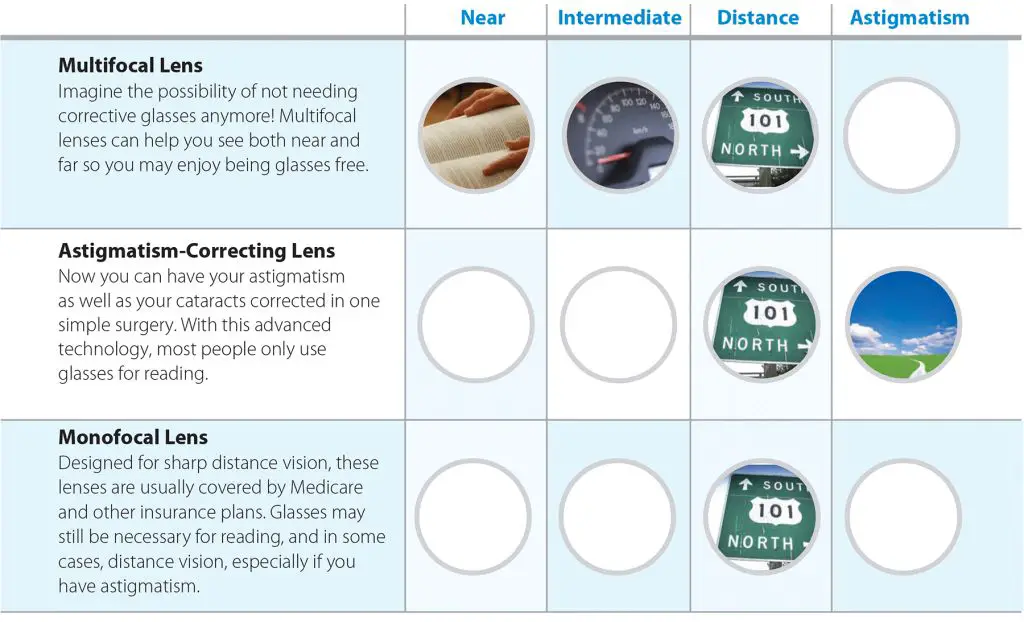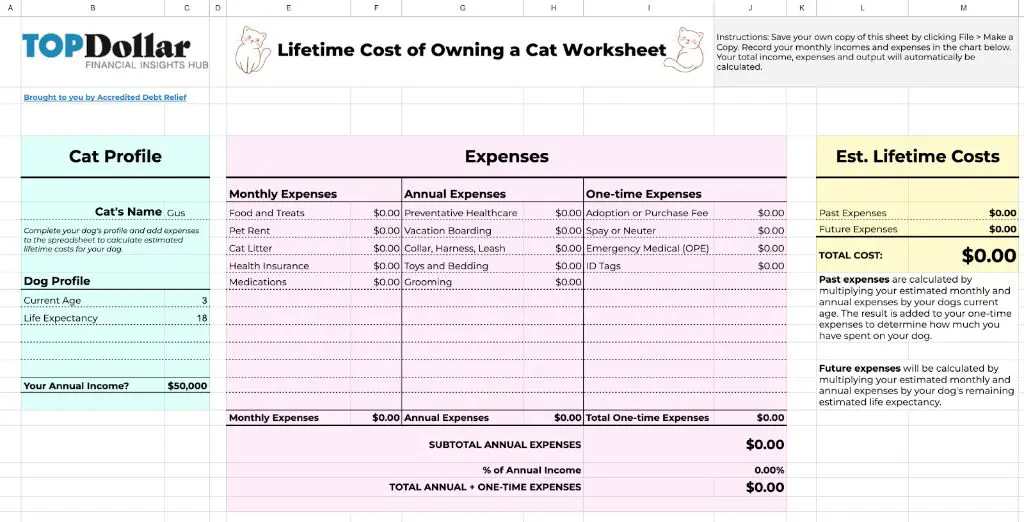Cataracts are a clouding of the natural lens in the eye that affects vision. As cataracts worsen, they can cause blurry vision, sensitivity to light and glare, poor night vision, seeing double, and faded color vision 1. Cataract surgery is a common procedure performed to treat cataracts by removing the clouded natural lens and replacing it with an artificial intraocular lens implant. The most common types of replacement lenses used in cataract surgery are monofocal, multifocal, and accommodating lenses. Monofocal lenses provide clear distance vision but require glasses for near vision. Multifocal lenses have different focusing zones to allow clearer near and distance vision, reducing dependency on glasses. Accommodating lenses can adjust focus using the eye’s natural accommodative ability 2.
Medicare Coverage for Cataract Surgery
Original Medicare covers cataract surgery if it is deemed medically necessary by your doctor. Cataract surgery is covered under both Part A and Part B of Medicare.
Part A covers the surgery if you are admitted to the hospital as an inpatient. This may occur if you have complex medical conditions that require monitoring after surgery. Under Part A, Medicare covers the hospital stay, surgeon fees, anesthesia, and other inpatient services related to the cataract procedure.
Part B covers outpatient cataract surgery performed at an ambulatory surgical center or hospital outpatient department. Under Part B, Medicare covers the facility fees, surgeon fees, anesthesia, and other outpatient expenses. Part B also covers an initial consultation with an ophthalmologist and follow-up appointments after the surgery.
In most cases, Medicare beneficiaries undergo cataract surgery as an outpatient procedure covered by Medicare Part B. Medicare covers the standard monofocal lens implant after cataract removal, but you may have to pay additional costs for upgraded premium lenses.

Cited from: https://www.medicare.gov/coverage/eyeglasses-contact-lenses
Types of Replacement Lenses
During cataract surgery, the natural lens in the eye is removed and replaced with an artificial intraocular lens (IOL). There are several types of IOLs that can be implanted:
Standard Monofocal Lenses
Monofocal IOLs have a single fixed focus and allow you to see clearly at one distance, usually far away. This is the most common and affordable type of IOL covered by Medicare. The main advantage of monofocal lenses is that they provide excellent distance vision. However, you will likely need glasses for near and intermediate vision after surgery (Duke Health).
Premium Lenses
There are several types of advanced technology IOLs, known as premium lenses, that aim to reduce or eliminate the need for glasses after cataract surgery:
- Multifocal IOLs have multiple zones for near, intermediate, and distance vision. However, some people experience halos or glare around lights (Reno Eye Care).
- Toric IOLs correct pre-existing astigmatism along with distance vision. They can reduce reliance on glasses but don’t help near vision (Duke Health).
- Accommodating IOLs allow the eye to shift focus between near and far. However, results can be mixed, and some patients still need glasses (Kraff Eye Institute).
While premium IOLs reduce the need for glasses, they usually come at an extra out-of-pocket cost not covered by Medicare.
Standard Monofocal Lenses
Original Medicare covers standard monofocal lenses 100% for cataract surgery patients according to Medicare guidelines [source]. Standard monofocal lenses provide clear distance vision after cataract removal, but do not correct presbyopia or astigmatism. They only focus at one distance, which is usually set for distance vision. With a standard monofocal IOL, some patients still need to wear glasses after surgery for reading or computer work. But the lenses are completely covered under Original Medicare Part B with no copays or coinsurance. Patients will be responsible for the Medicare Part B deductible for the surgery itself, but the standard monofocal lenses are covered with no out-of-pocket costs.
Premium Lenses

Original Medicare does not cover premium lenses like multifocal, toric, and accommodating lenses. These provide additional benefits like near and intermediate vision. Some examples of premium lenses not covered by Original Medicare include:
- Multifocal lenses that correct presbyopia and allow clear near, intermediate, and distance vision. These include trifocal and extended depth of focus lenses (American Academy of Ophthalmology, 2022).
- Toric lenses that correct pre-existing astigmatism and improve unaided distance vision (ICON Eyecare, 2023).
- Accommodating lenses that allow the eye to focus at varying distances by moving along the visual axis.
These advanced technology lenses go beyond basic visual correction and provide extra benefits that restore a full range of high-quality vision. However, they are considered enhancements and not covered under standard Medicare Part B for cataract surgery (American Academy of Ophthalmology, 2023).
Medicare Advantage Plans
Original Medicare will cover a basic monofocal lens implant during cataract surgery, but may not cover premium lenses like toric, multifocal, or accommodating lenses that correct astigmatism or presbyopia. Some Medicare Advantage plans (also known as Medicare Part C or MA plans) offer additional coverage for premium lenses as an extra benefit beyond what Original Medicare covers.
According to Humana, some MA plans will contribute a set allowance or reimbursement amount towards the additional out-of-pocket costs for upgraded lens implants 1. These allowances can range from $200 to $2,000 depending on the specific plan. Humana cites their own HumanaChoice Medicare Advantage plans as an example that provides up to $2,000 towards astigmatism-correcting toric lenses.
It’s important for patients to verify with their specific Medicare Advantage plan about coverage details for premium intraocular lenses before scheduling cataract surgery. The costs and benefits can vary greatly across different MA plans and regions. Working with an experienced ophthalmologist and insurance provider is key to understanding and minimizing out-of-pocket expenses.
Out-of-Pocket Costs
The standard monofocal lenses that Medicare covers often only correct distance vision, requiring glasses for near and intermediate vision. Premium lenses like multifocal or accommodating lenses provide clear vision at multiple distances but come at extra out-of-pocket cost. According to https://www.bettervisionguide.com/cataract-surgery-cost/, the average out-of-pocket cost for premium lenses is $2,500 per eye.
Since Medicare does not cover the additional cost of premium lenses, patients need to pay out of pocket or have secondary insurance. Some Medicare Advantage plans may cover part of these costs. Private supplemental insurance like AARP may also help cover premium lens upgrades. According to https://www.aarp.org/health/conditions-treatments/info-2019/cataract-surgery-fd.html?, AARP plans can provide up to $2,000 in additional coverage for cataract surgery, which could significantly offset premium lens expenses.

It’s important for patients to check with both their Medicare Advantage provider and any secondary insurance plans to understand coverage specifics before surgery. Knowing coverage details allows patients to budget accordingly and choose the best lenses to maximize vision health after cataract surgery.
Choosing the Right Lens
When it comes to choosing the right replacement lens for cataract surgery, there are a few key factors patients should consider based on their visual needs and budget:
Patients who are happy wearing glasses after surgery may opt for a standard monofocal lens, which provides clear vision at one distance, usually for far away. This is the most budget-friendly option covered by Medicare (American Academy of Ophthalmology).
For those wanting reduced dependency on glasses, premium intraocular lenses (IOLs) provide focus at multiple distances. Options include trifocals for near, intermediate, and distance vision, or extended depth of focus lenses. These advanced lenses cost extra out-of-pocket.
Before surgery, patients should have an in-depth discussion with their ophthalmologist about their vision needs and eye health. The doctor can explain lens options and help determine which IOL is the best choice based on the patient’s eye condition, desired visual outcomes, and budget.
With their doctor’s guidance, patients can select an artificial lens that maximizes visual clarity while minimizing future lens replacements or additional procedures like laser vision correction. Proper lens selection is key to achieving the best possible post-surgery quality of life.

Other Treatments for Presbyopia
Besides multifocal lenses, there are some other options to correct presbyopia. These include:
Monovision: This involves adjusting one eye for near vision, and the other for distance vision. It can be achieved with contact lenses, LASIK or cataract surgery with monofocal lenses. Monovision helps create functional vision at all distances but can reduce depth perception and lead to eyestrain (Source).
Reading glasses: These provide magnification for near tasks like reading. However, they need to be put on and removed as needed. Some people use bifocals or progressive lenses to avoid this (Source).
While multifocal IOLs aim to provide seamless vision at all distances after cataract surgery, alternatives like monovision and reading glasses may suit some patients too. Discussing the pros and cons with your eye doctor can help determine the optimal solution.
Conclusions
In summary, Original Medicare covers standard monofocal lenses for cataract surgery, but not premium lenses like multifocal or toric lenses. Patients who wish to correct presbyopia or astigmatism will need to pay out-of-pocket costs for these upgraded lenses.
When deciding on which lens is right for you, have an in-depth discussion with your eye doctor about the pros and cons of each option. Consider your visual needs and eye health, as well as your budget. Monofocal lenses may be sufficient for many patients, while others may find the benefits of premium lenses worth the additional expense.
Cataract surgery with lens replacement can significantly improve vision impaired by cataracts. With the variety of replacement lens options now available, it’s important to understand your Medicare coverage and out-of-pocket responsibilities. Thorough conversations with your ophthalmologist will help you make the best choice to meet your visual, medical, and financial needs.
